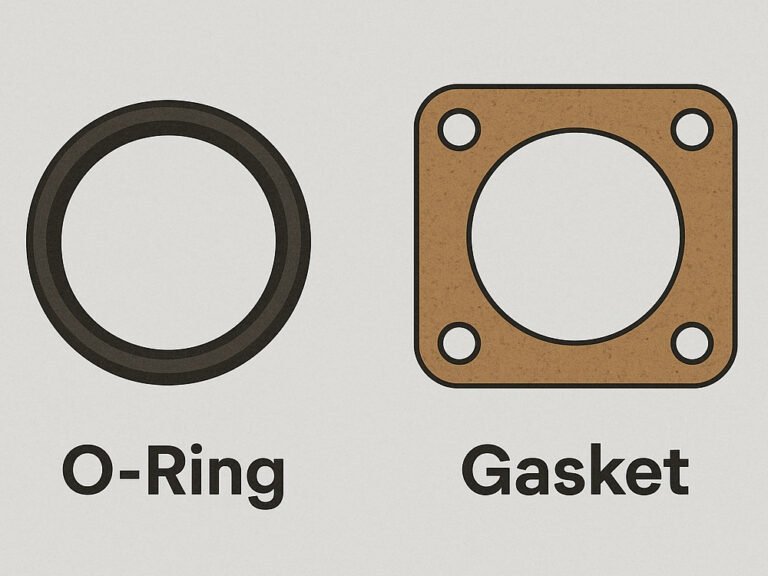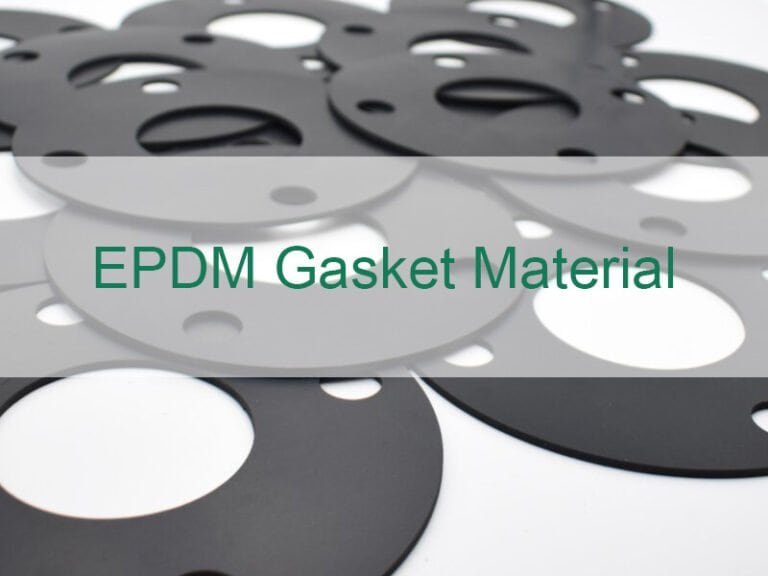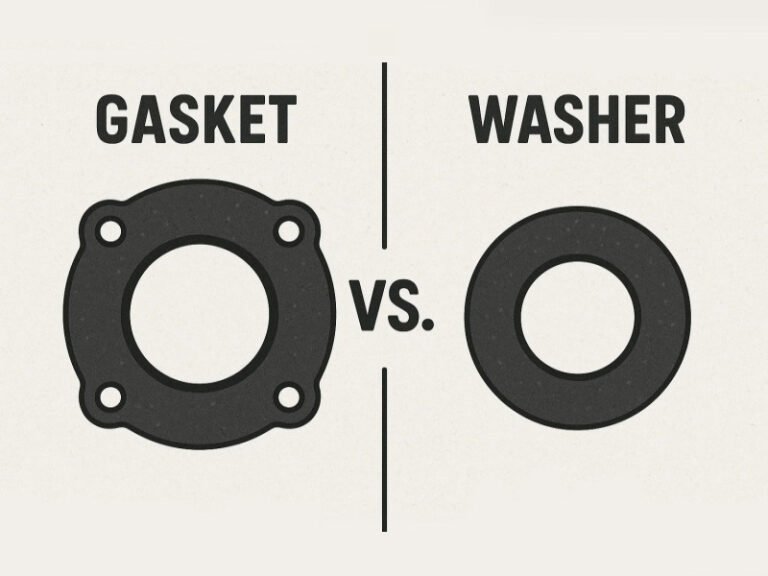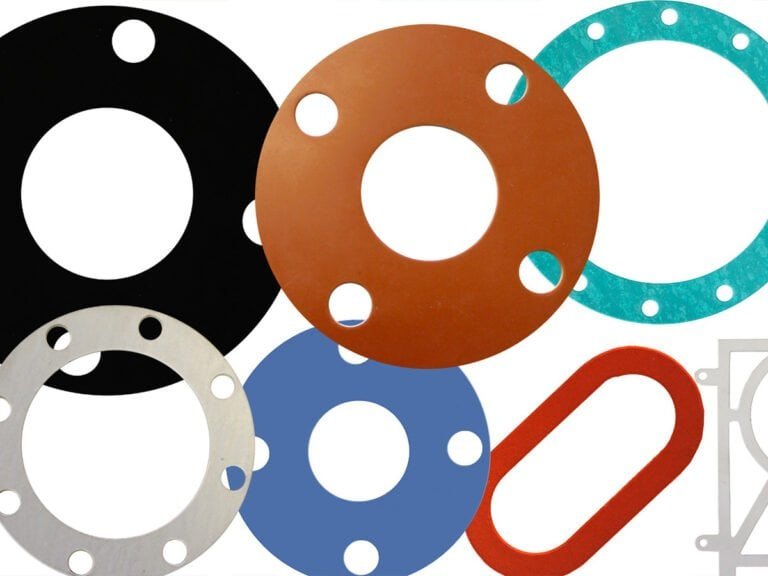Both are common sealing components but differ in shape, function, and use. This article delves deeply into comparing rubber o-rings and gaskets, helping you understand gasket vs o-ring differences and choose the right solution for your application.
What Is an O-ring?
An O-ring is a circular, elastomeric sealing device with a round cross-section. It is designed to be seated in a groove and compressed between two parts to create a reliable, leak-proof seal. O-rings are known for their simple design, ease of installation, and excellent sealing performance under pressure. Common materials include Nitrile, EPDM, Silicone, FKM, and Neoprene, each chosen based on temperature, chemical resistance, or mechanical needs. O-rings are widely used in hydraulic systems, pneumatic equipment, automotive components, and industrial machinery.
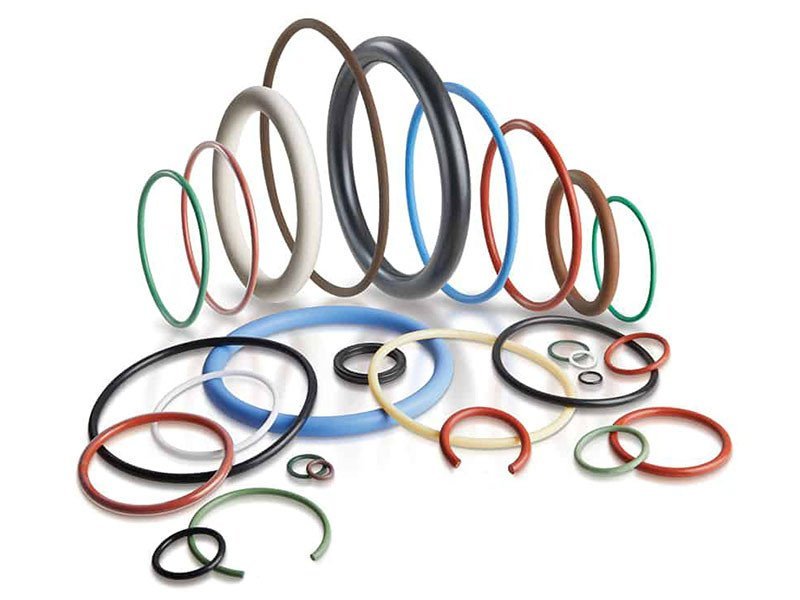
What is a Gasket?
A gasket is a flat sealing component placed between two surfaces to prevent leakage of gases or fluids. Unlike O-rings, gaskets are typically cut from sheet materials and can be made in various shapes and sizes. Key features include good compressibility, chemical resistance, and the ability to conform to uneven surfaces. Common gasket materials include rubber (such as EPDM, NBR, or Silicone), cork, PTFE, graphite, and fiber-reinforced composites. Gaskets are commonly used in piping systems, flanges, engines, pumps, and electrical enclosures.
![]()
The Difference Between O Ring and Gasket
When comparing O-ring vs. gasket, several key differences emerge. Below is a detailed comparison:
Shape and Design
The most obvious difference between a gasket and an O-ring is their shape. O-rings are uniformly circular with a round cross-section, designed to fit into grooves for consistent sealing. Gaskets, on the other hand, are flat or slightly contoured, tailored to match the specific geometry of the mating surfaces.
Application Suitability
O-rings excel in both static and dynamic sealing. Their elasticity allows them to maintain a seal during motion, such as in hydraulic pistons or rotating shafts. Gaskets, however, are primarily used in static applications, where they seal stationary components like flanges or engine covers. The gaskets vs. O-rings comparison highlights that O-rings are more versatile for dynamic environments, while gaskets are better for static, complex assemblies.
Sealing Mechanism
The sealing mechanism further distinguishes the O-ring vs. the gasket. O-rings rely on elastic deformation, where the material compresses within a groove to form a tight seal. This deformation allows O-rings to adapt to pressure changes or minor misalignments. Gaskets, conversely, depend on compression between two surfaces, requiring higher sealing stress to fill gaps and prevent leaks.
Environmental Considerations
O-rings are designed for high-pressure or dynamic conditions, such as in hydraulic systems or aerospace components, where their materials withstand extreme temperatures or chemical exposure. Plastic gaskets are better suited for lower-pressure, static applications, particularly where surfaces are uneven or require custom sealing shapes.
Installation Requirements
The O-ring must be correctly sized to avoid over-compression or under-compression. Gaskets, on the other hand, require proper alignment of mating surfaces and sufficient compressive force, often applied via bolts or clamps. Installation of gaskets may involve more complex assembly processes, especially for custom shapes.
Maintenance Requirements
O-rings require minimal maintenance. Their reusability reduces maintenance costs, as they can often be reinstalled if undamaged. Gaskets, being typically single-use, require regular replacement, particularly in high-temperature or high-pressure environments where material degradation is common.
Cost-Effectiveness
O-rings are generally more cost-effective due to their standardized sizes, wide availability, and reusability. Their simple design and mass production keep costs low. Gaskets, particularly custom-cut designs, can be more expensive due to material costs and manufacturing complexity. And their single-use nature further increases long-term costs, as replacements are needed more frequently.
Choosing the Right Seal: Gasket vs O-ring
The difference between an O-ring and a gasket means that selecting the right seal depends on your application’s specific requirements. For high-pressure or dynamic systems, O-rings are often the better choice due to their elasticity and groove-based sealing. For static applications with irregular surfaces, gaskets provide a robust solution. Factors like pressure, temperature, chemical exposure, and surface geometry should be considered when you choose the products. Consulting with sealing experts can ensure you select the optimal material and design for long-term reliability.
Contact Us for Tailored Sealing Solutions
Whether you’re navigating the gaskets vs. O-rings debate or seeking the perfect seal for a unique application, understanding the difference between gaskets and O-rings is the first step. Need help selecting the ideal sealing solution? Contact our team to discuss your project’s needs and discover tailored O-ring or gasket solutions.

